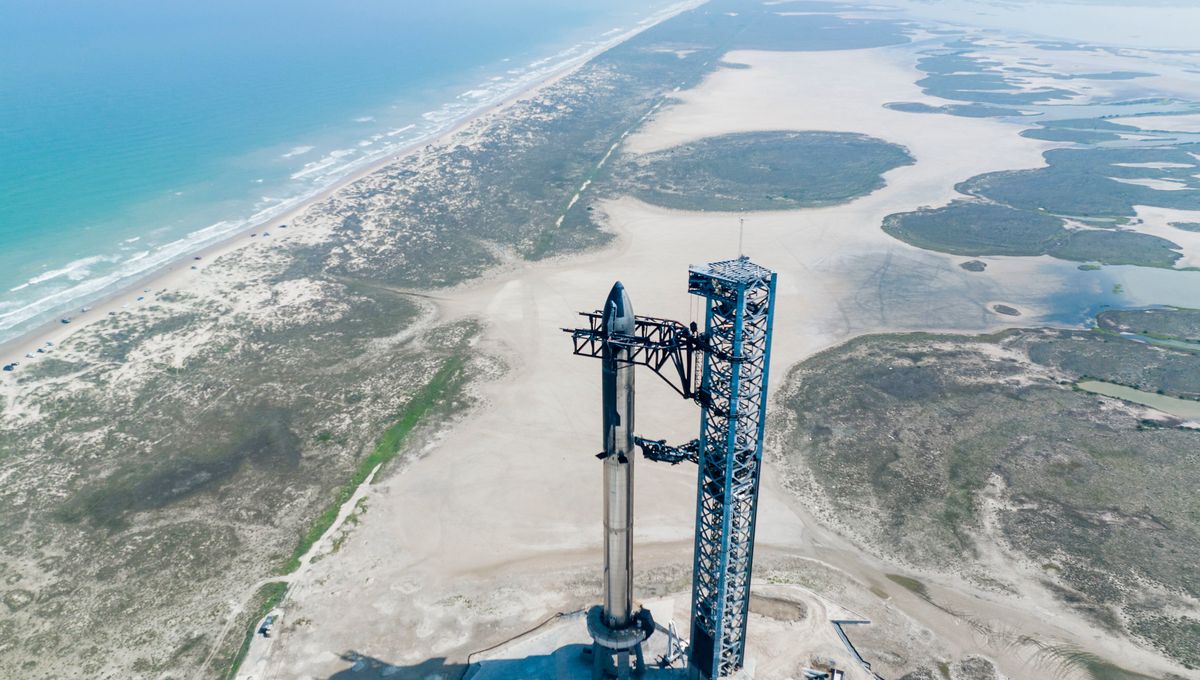
The fourth test of Starship has been a success. The Starship and Super Heavy booster combo lifted off from SpaceX’s Starbase in Boca Chica, Texas, at 7:50 am local time. The test was for Super Heavy to demonstrate that it could land back on Earth and for Starship to successfully reenter through the atmosphere after having gone into orbit.
Neither Starship nor Super Heavy landed. They are designed to do so but it was not part of this test. Super Heavy used a virtual tower, acting like it was landing on land and reigniting the engines just above the sea of the Gulf of Mexico, demonstrating that it can be done.
Starship reached an altitude of 212 kilometers (132 miles) before coming back to Earth. The ship got beat up during re-entry, with the flaps breaking apart a bit and a camera getting cracked. It safely reached terminal velocity and was able to re-orient itself and perform its first-ever landing burn, before safely splashing down.
Put together, Starship and Super Heavy are the biggest and most powerful rockets ever built. In total, they make up a rocket that is 122 meters (400 feet) tall. NASA’s Space Launch System (SLS) rocket, which will be used to take astronauts back to the Moon, is 98 meters (322 feet) tall. For historical comparison, Super Heavy has twice the thrust of the Saturn V, which took the astronauts of the Apollo missions to the Moon. In the future, SpaceX hopes to increase the thrust by up to three times what was achieved by Saturn V.
SLS was briefly the record holder of tallest and most powerful rocket ever built. But if there is a competition, it is friendly. SLS and Starship have to work together to return astronauts to the Moon. SLS will bring the Orion capsule to Lunar orbit – a special one called the Near-Rectilinear Halo Orbit – where it will encounter Starship. Starship then will ferry the astronauts to and from the Moon’s surface.
Without Starship, there is currently no way of getting to the lunar surface, hence the importance of these tests for the future of lunar exploration. Starship needs to demonstrate continuous safety and success. Two more tests are expected this year but SpaceX has not yet shared any details about them.
Starship has so far achieved several successes but all its flights have ended in fire. The first launch in April 2023 showed that the rocket can fly but Super Heavy and Starship couldn’t separate which led to SpaceX deliberately blowing up the rocket to keep it from veering off course.
There was a lot of discussion about the first test being rushed at the behest of SpaceX CEO Elon Musk, who was claimed to be keen to make a weed-related joke about the launch date as it lifted off on 4/20. Another point of evidence of the rush job of the launch was the extensive damage the rocket did to Starbase – its launch platform. Its powerful engine ended up blowing out a chunk of concrete from beneath its orbital launch mount and raining debris in the vicinity.
The second test was in November 2023. It was another partial success, building on the first launch. The Super Heavy booster exploded, but luckily after it had separated from Starship. But Starship too ended up going boom. Contact was lost between Starship and ground control after 9 minutes and the onboard computers exploded the ship.
The third test was the closest to a complete success. It took place in March and was the farthest and fastest that Starship has ever flown. Both Super Heavy and Starship were supposed to do a soft splash landing, but neither did. Super Heavy hit the Gulf of Mexico as fast as a F1 car. Starship burned over the Indian Ocean instead of splashing down in it.
Source Link: Starship Successfully Completes Fourth Test – And This Time Didn't Explode